Dongge Jia
Email: doj14 (at) pitt (dot) edu

“Diligent and Virtuous”
Github |
Linkedin
|
I am a Ph.D. student in Electrical and Computer Engineering at the University of California, San Diego and San Diego State University, jointly advised by Prof. Junfei Xie and Prof. Nikolay Atanasov. My research interests lie in Embodied AI and Computational Mechanics. Prior to my Ph.D. studies, I earned a Master’s degree from Shanghai Jiao Tong University and a Bachelor’s degree from Huazhong University of Science and Technology. I also worked as a research assistant at the University of Pittsburgh for two years.
|
|
Research Experience
|
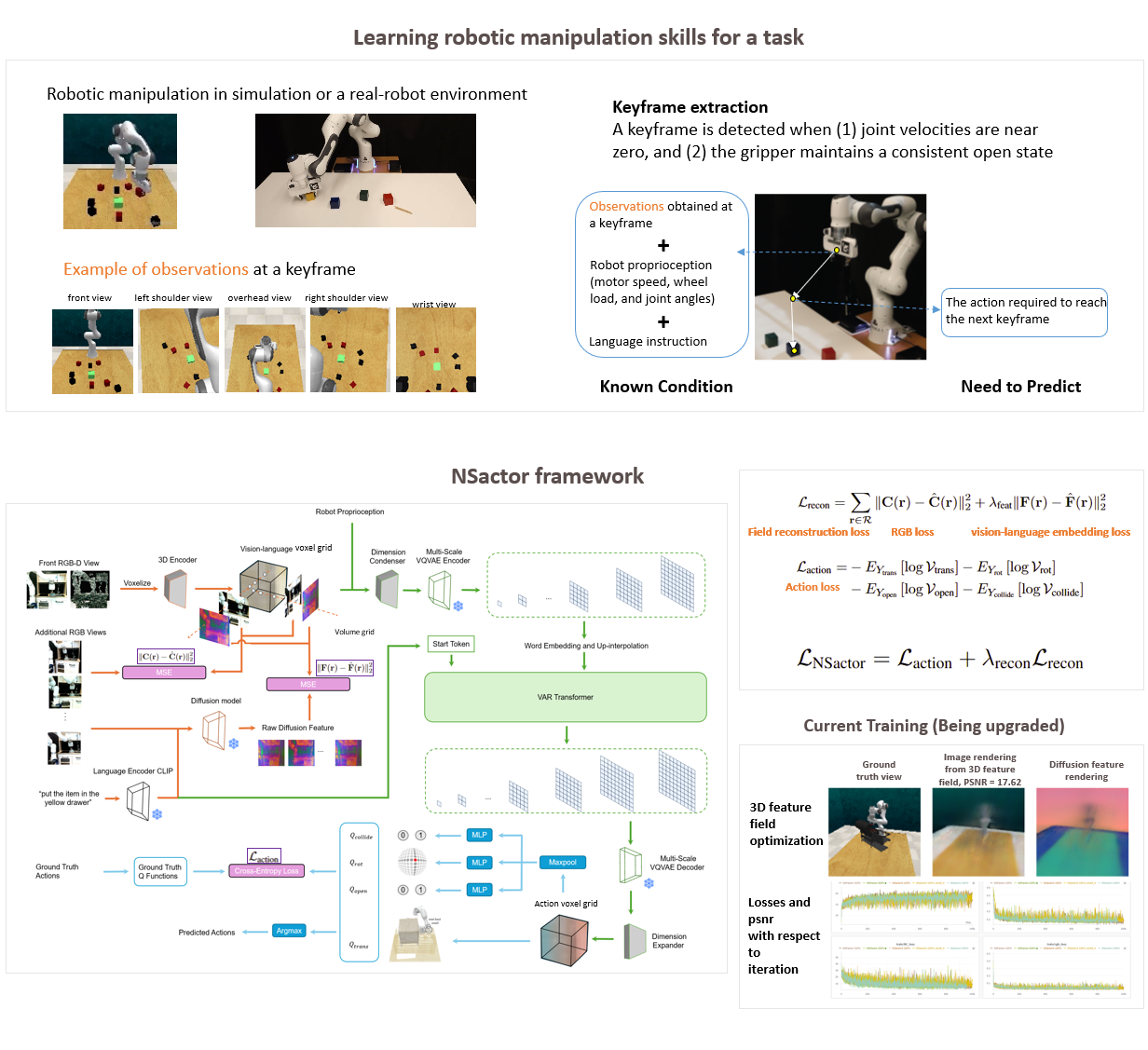
|
Imitation Learning for generalizable long-horizon visuomotor control (2024, SDSURF)
The details will be available after publication.
|
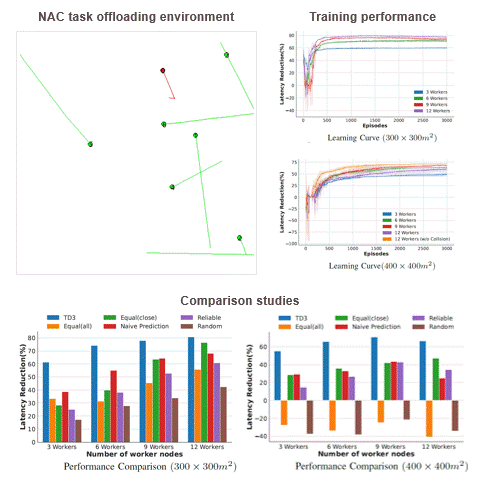
|
Task offloading for networked UAVs using deep reinforcement learning (2024, SDSURF)
The details will be available after publication.
|

|
Hand joint localization and Labeling with SpatialConfiguration-Net (2024, Pitt)
This work implements the convolutional SpatialConfiguration-Net (SCN) for anatomical landmark labeling by
dividing the
task into two sub-problems: one for locally accurate predictions and another for resolving ambiguities using
spatial configurations. SCN combines heatmap predictions from both components, enabling efficient end-to-end
training. Evaluations on open-source hand radiographs show that SCN achieves high performance even with
limited training data.
Github Repository
|

|
In vivo subject-specific estimation of cervical intervertebral disc degeneration (2023–2024, Pitt)
A computational method is proposed to estimate the in vivo material degradation of cervical intervertebral
discs. The kinematics of the cervical spinal column is modeled using a nonlinear finite element method,
incorporating the latest nonlinear material properties from experiments. In vivo intervertebral motion data,
acquired from biplane radiography for a given subject, were used to validate the spine mechanical model and
inversely calibrate the deterioration of discs.
In Vivo Subject-Specific Estimation of Cervical Spine Discs Material Properties
Dongge Jia, Soumaya Ouhsousou, Clarissa M. LeVasseur, Jeremy Shaw, William Anderst, John C. Brigham
8th International Conference on Computational and Mathematical Biomedical Engineering 2024 (conference
presentation)
|
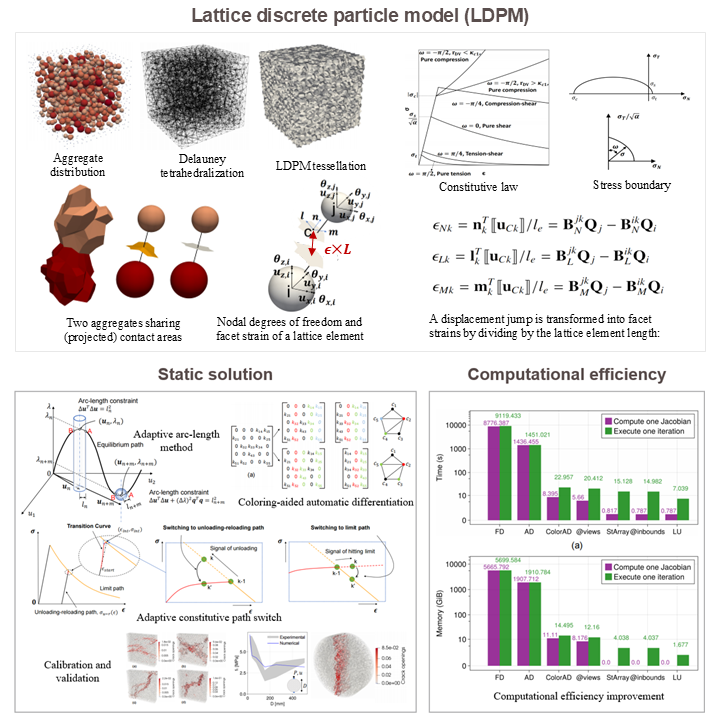
|
An efficient static solver for the lattice discrete particle model (2022–2023, Pitt)
This study presents the first static solver for LDPM, introducing several fundamental innovations to overcome
convergence issues. Additionally, graph coloring of the Jacobian operator, automatic differentiation, and
advanced matrix manipulations are utilized to improve computational efficiency by up to 1000 times.
An Efficient Static Solver for the Lattice Discrete Particle Model
Dongge Jia, John C. Brigham, Alessandro Fascetti
Computer-Aided Civil and Infrastructure Engineering 2024 (journal paper, 5-year IF:10.8, 97th
percentile in “Computational Theory and Mathematics”)
An Efficient Static Solver for the Lattice Discrete Particle Model
Dongge Jia, John C. Brigham, Alessandro Fascetti
Engineering Mechanics Institute Conference and Probabilistic Mechanics & Reliability Conference 2024
(conference presentation)
|
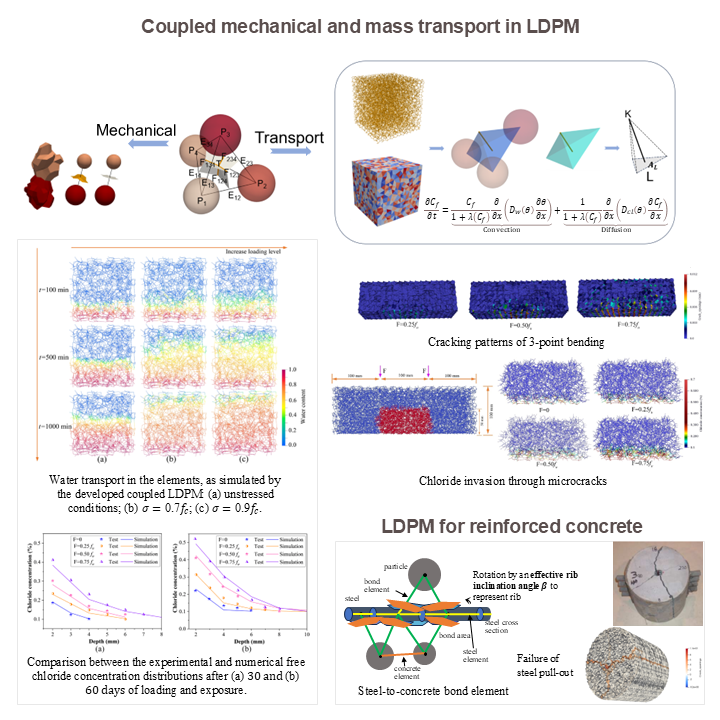
|
Lattice discrete particle modeling for coupled mechanical and mass transport simulation of reinforced
concrete (2022–2023, Pitt)
This study introduces three new elements to the LDPM: mass transport elements through cracks, steel
elements, and steel-to-concrete bond elements. These enhancements enable the model to simulate chloride
transport in damaged reinforced concrete. The integrated model uses a fully dynamic solution strategy:
reinforced concrete is solved with an explicit method and central difference scheme, while mass transport
models use an implicit method with the Crank-Nicolson scheme.
A Novel Dual Lattice Discrete Particle Model for Multiphysics Simulation of Coupled Mechanical and
Transport Behavior in Concrete Members Subjected to Long-Term Loading
Dongge Jia, Yingbo Zhu, John C. Brigham, Alessandro Fascetti
16th World Congress on Computational Mechanics and 4th Pan American Congress on Computational Mechanics 2024
(conference presentation)
Coupled Lattice Discrete Particle Model for the simulation of water and chloride transport in
cracked concrete members
Yingbo Zhu (co-first author), Dongge Jia (co-first author, responsible for model and solution development),
John C. Brigham, Alessandro Fascetti
Computer-Aided Civil and Infrastructure Engineering 2024 (journal paper, 5-year IF:10.8, 97th
percentile in “Computational Theory and Mathematics”)
|
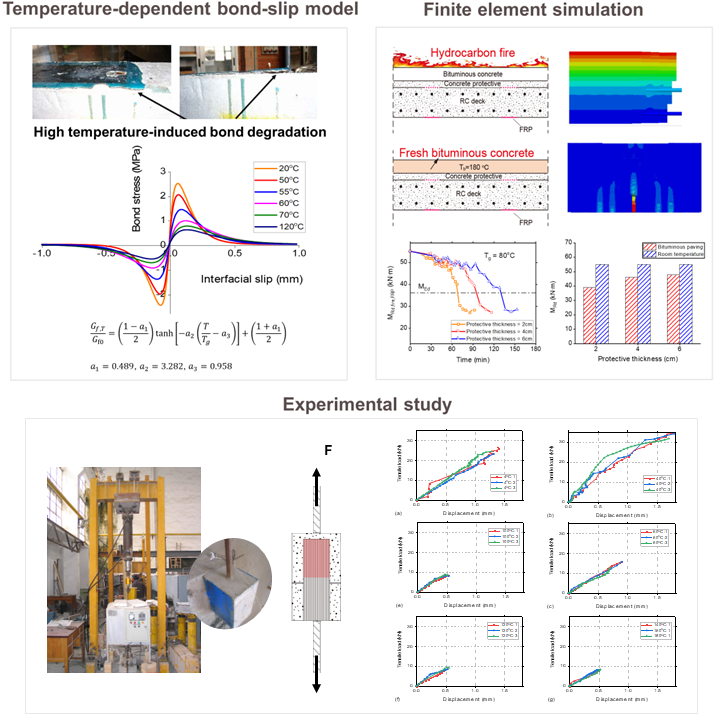
|
High-temperature-induced deterioration of fibre-reinforced polymer (FRP)-to-concrete bonded joints and
the resultant reduction
in the load-bearing capacity of FRP-strengthened bridge decks (2020–2021, SJTU)
Based on my theoretical analytical solution and high-temperature FRP-concrete interface shear test data, a
precise constitutive model for the bond-slip behavior at high temperatures was developed. This model
accurately captures the reduction in local bond strength, increased peeling deformation, and slower softening
of bond stress due to high temperatures. A finite element model was then used to analyze the effects of fires
and hot asphalt laying on the load-bearing capacity of FRP-strengthened concrete bridge decks.
Mechanical Behavior, Constitutive Model and Application of the FRP-to-Concrete Interface Under
Coupled
Effects of High Temperature and Loading
Dongge Jia
Master's Thesis, SJTU 2022
|
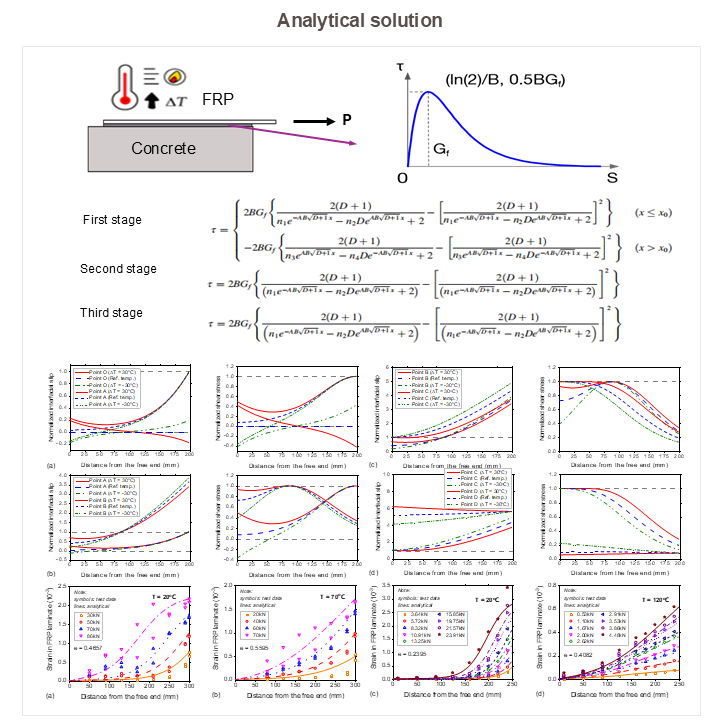
|
Analytical solution for the full-range behavior of FRP-to-concrete bonded joints under combined
loading and temperature variations (2019–2021, SJTU)
This analytical study predicts the full-range deformation behavior of a mechanically loaded FRP-to-concrete
bonded joint with arbitrary bond lengths under temperature variations. The closed-form solution isolates
interfacial thermal stress effects from temperature-induced material property changes, accurately calibrating
bond-slip characteristics and interfacial fracture energy.
Full-Range Behavior of FRP-to-Concrete Bonded Joints Subjected to Combined Effects of Loading and
Temperature Variation
Dongge Jia, Wanyang Gao, Dexin Duan, Jian Yang, Jianguo Dai
Engineering Fracture Mechanics 2021 (journal paper, 5-year IF:4.8, 90th percentile in
“Mechanical
Engineering”)
|
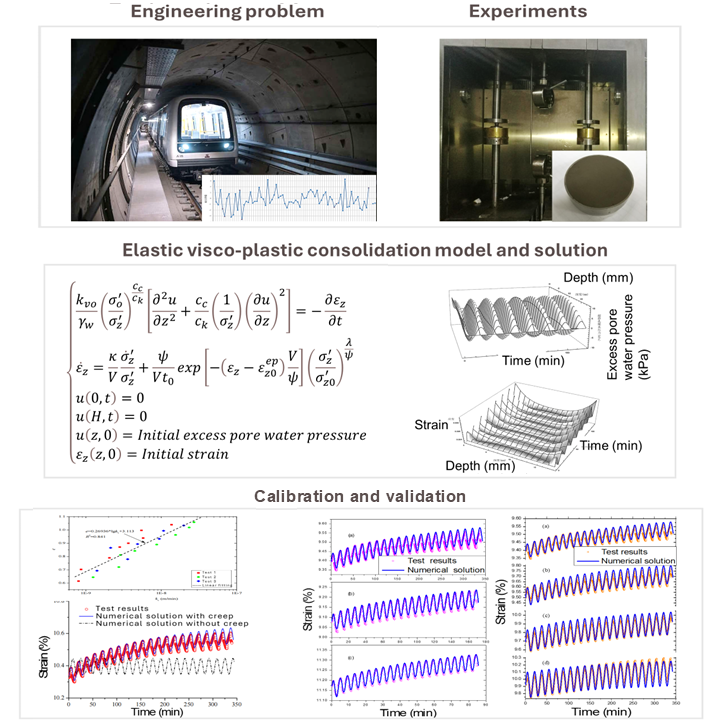
|
An elastic visco-plastic nonlinear consolidation model of soft clay under cyclic loading (2017–2018,
HUST)
Long-term consolidation and settlement analysis of soft clay under cyclic loading is critical for settlement
prediction of infrastructures such as highways and railways. Currently available constitutive models of soft
clay do not take into account of both creep settlement and the dynamic effect of train loading. This study
establishes an elastic visco-plastic nonlinear consolidation model for cyclic loading conditions with
nonlinear behavior of permeability coefficient kv and volume compressibility coefficient
mv.
One Dimensional Elastic Visco-Plastic Nonlinear Consolidation Model of Soft Clay Under
Cyclic Loading
Dongsheng Xu (advisor), Dongge Jia, Yangguang Zheng
Chinese Preprint 2018
|
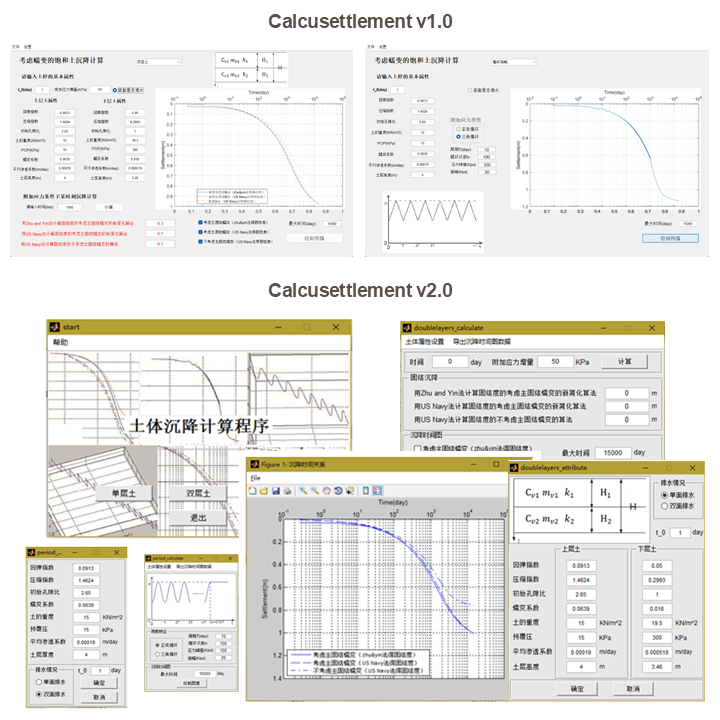
|
Development of long-term settlement calculation software for soft clay foundations considering
different creep effects (2017–2018, HUST)
To support the operation and maintenance of the Hangzhou Metro, a MATLAB-based software named
Calcusettlement was developed. This software calculates settlement in multi-layered mixed soft
clay foundations using consolidation models from Zhu and Yin (2005) and the U.S. Navy (1985). It also includes a
module to account for creep effects and allows users to customize dynamic loading conditions.
MATLAB-Based Software: Long-Term Settlement Calculation Software for Soft Clay Foundations
Considering Different Creep Effects
Dongsheng Xu (advisor), Dongge Jia
China Copyright Administration, No. 04768603, 2019. (Software copyright)
|
|
Misc
|
|
I am a passionate enthusiast of Chinese opera, with a particular fondness for Henan Opera, Quju Opera, and
Yue Diao. In addition to opera, I enjoy popular music and have participated in numerous singing
competitions. I appreciate all genres of music,
whether ethnic, classical, popular, or experimental.
|
|
Modified version of template from here
|
|

